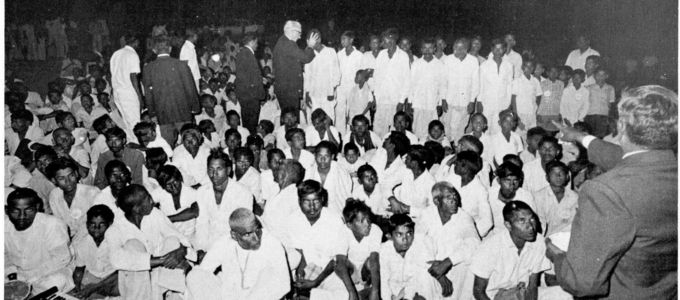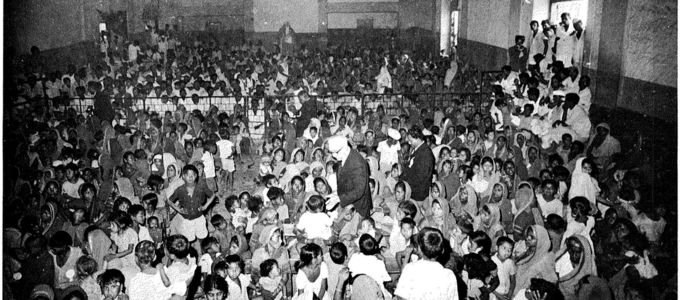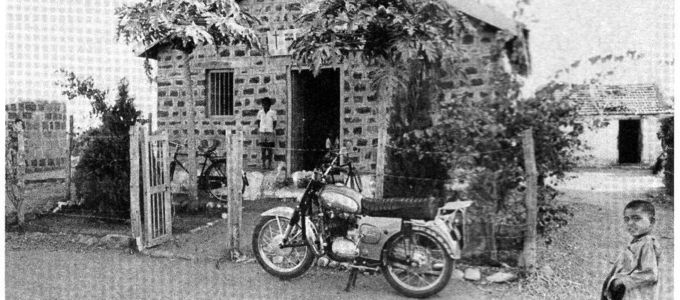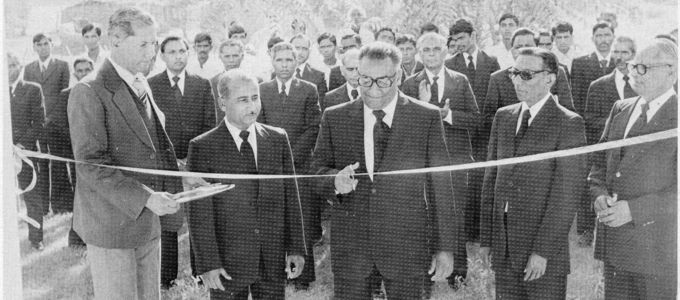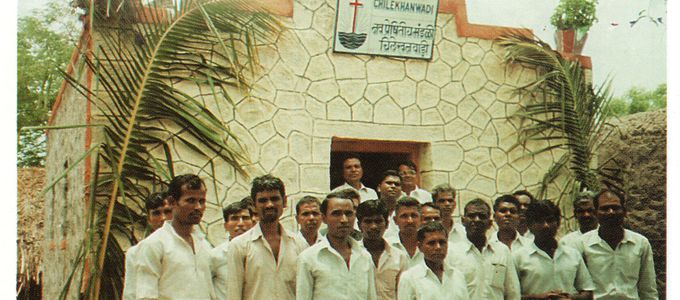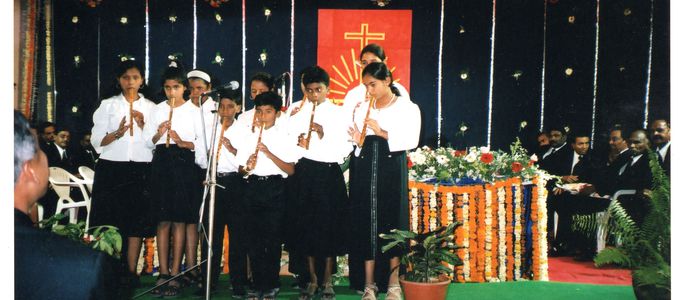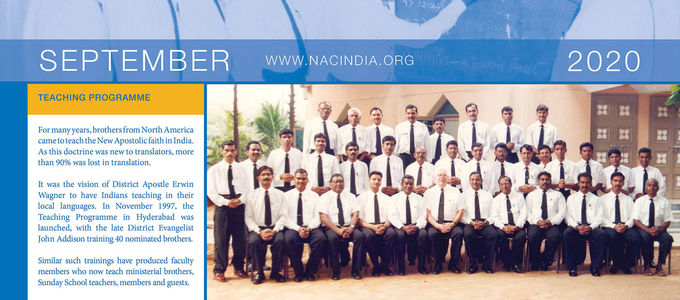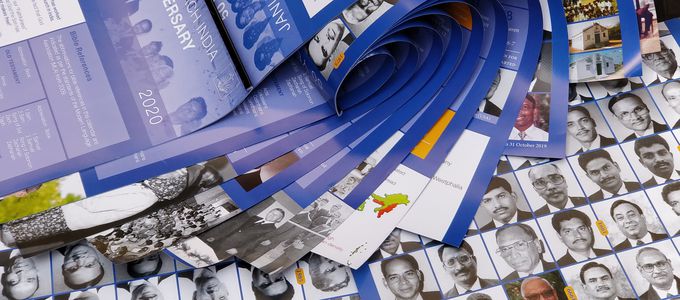
It all began with a woman who became New Apostolic while on a trip to Denmark fifty years ago. Upon returning to India, she did not keep her faith to herself, but rather told many others about Jesus and living Apostles. And against all odds, there are around 45,000 New Apostolic Christians living in India today.
How it all began
In 1968, Angel Robinson, an Indian citizen, travelled to Denmark. There she met up with the family of Herbert Mauritz, who told her about the New Apostolic Church. Angel Robinson’s interest was piqued, and so she began attending the divine services. A short time later she was sealed in Tønder, Denmark by District Apostle Karl Weinmann.
After returning home, she told her son a great deal about the New Apostolic Church. He was very interested and soon had the desire to become New Apostolic as well. When District Apostle Michael Kraus travelled to India in May 1970, John Robinson was sealed and ordained as the first Priest in India. .
With great determination, the first New Apostolic Christians in India set out to tell others about their faith. People gathered from near and far, in halls and open spaces alike, in order to hear the word of God from the altar. In divine services that took place in large halls, there were at times thousands of sealings at once.
This large number of New Apostolic Christians needed church buildings and ministers. The first church building in India was dedicated in Kamalnagar in 1972. Other church buildings soon followed. Some were built on land that had been donated by members. Throughout the country, new congregations came into being, and new ordinations took place. On 20 July 1975, the then Chief Apostle Ernst Streckeisen ordained the first six Apostles for India. One of these was John Robinson.
Christendom in India
Approximately 80 per cent of the Indian population today are Hindus, 13 per cent are Muslim, and only about two and a half per cent are Christian. Of these, only a very small portion are New Apostolic. In India there are many different languages: 22 main languages, and approximately 800 different dialects. Even though the New Apostolic Christians only come from nine of these different language groups, the language barriers are still quite a challenge. In addition, the poor infrastructure often makes it difficult for the ministers to visit the members in all parts of the country. Apostle Christranjan Nanda (retired as of January 2019) relates as follows: “Some places are not very accessible, and in those areas it takes me about three hours to cover 80 kilometres by motorcycle.”
Despite this, the Church’s members in India are confident. The New Apostolic Church has members there from all walks of life, as well as a large proportion of young and committed Christians. The young people are quite tech-savvy and speak English, so they manage to overcome the language barriers quite easily. It was also young people who recognised the opportunities in the COVID-19 crisis and took action.
In the year 2000, the New Apostolic Church in India was still in the care of five different District Churches. Today, the New Apostolic Church Canada is responsible for the New Apostolic Christians in India. Some 900 ministers take care of 45,000 members in 550 congregations. The country has one District Apostle Helper, and six Apostles who are supported by six Bishops.
Activities despite—or precisely because of—the pandemic
For the anniversary year 2020, a calendar was created that offers a brief summary of the history of India every month. Many more details corresponding to the theme of the month will be published on Facebook all year round.
Numerous activities had been planned for the anniversary, but unfortunately, the government banned church gatherings due to the pandemic. Young Priests from Northern India wondered how to reach the brothers and sisters despite this obstacle. They quickly came up with the idea of organising a virtual meeting. It turned out that this idea could be used for church services too. Not long after, services were being conducted every Sunday in several languages using video conferencing apps.
In Mumbai it was also young Priests who initiated the “Members to members” support campaign. It is intended to link members available to help with members who need help as a result of the crisis.
Robert Maier, our nac.today correspondent in India, has the following to say about this: “What began as a great challenge is now like the fulfilment of a dream we have had for many years: finally, our members throughout the country can transcend all state and language barriers to come together. The effort of bringing all of these people together physically in one place was always a huge logistical challenge in the past. Thanks to the zeal and enthusiasm of our tech-savvy youth in particular, we are now able to keep in touch despite this pandemic.”






